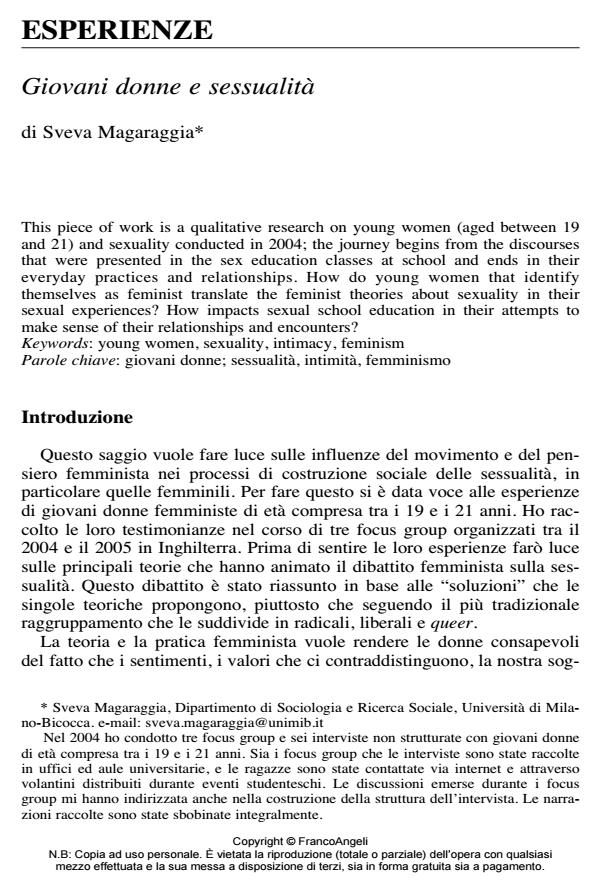Giovani donne e sessualità
Titolo Rivista SALUTE E SOCIETÀ
Autori/Curatori Sveva Magaraggia
Anno di pubblicazione 2013 Fascicolo 2013/2
Lingua Italiano Numero pagine 15 P. 115-129 Dimensione file 112 KB
DOI 10.3280/SES2013-002007
Il DOI è il codice a barre della proprietà intellettuale: per saperne di più
clicca qui
Qui sotto puoi vedere in anteprima la prima pagina di questo articolo.
Se questo articolo ti interessa, lo puoi acquistare (e scaricare in formato pdf) seguendo le facili indicazioni per acquistare il download credit. Acquista Download Credits per scaricare questo Articolo in formato PDF

FrancoAngeli è membro della Publishers International Linking Association, Inc (PILA)associazione indipendente e non profit per facilitare (attraverso i servizi tecnologici implementati da CrossRef.org) l’accesso degli studiosi ai contenuti digitali nelle pubblicazioni professionali e scientifiche
This piece of work is a qualitative research on young women (aged between 19 and 21) and sexuality conducted in 2004; the journey begins from the discourses that were presented in the sex education classes at school and ends in their everyday practices and relationships. How do young women that identify themselves as feminist translate the feminist theories about sexuality in their sexual experiences? How impacts sexual school education in their attempts to make sense of their relationships and encounters?
Parole chiave:Giovani donne; sessualità, intimità, femminismo
- ‘The pictures I really dislike are those where the girls are naked!’ Postfeminist norms of female sexual embodiment in contemporary Italian digital culture Arianna Mainardi, in Modern Italy /2018 pp.187
DOI: 10.1017/mit.2018.6
Sveva Magaraggia, Giovani donne e sessualità in "SALUTE E SOCIETÀ" 2/2013, pp 115-129, DOI: 10.3280/SES2013-002007